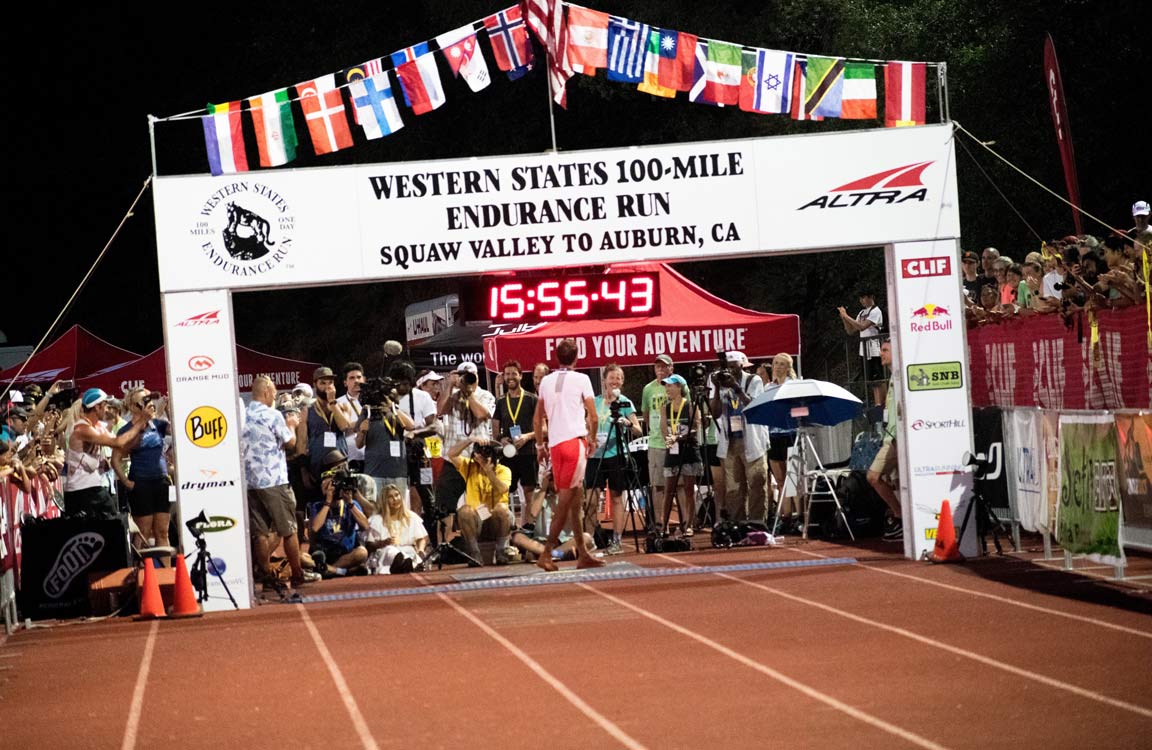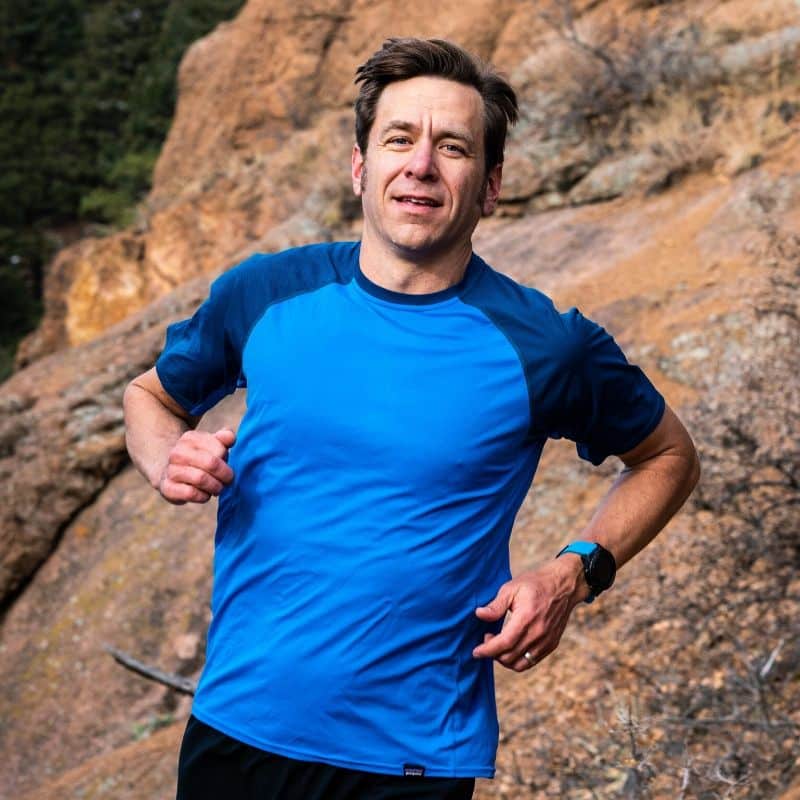
How Ultramarathons Will Be Won From Now On
By Jason Koop,
CTS Coaching Director
Author, “Training Essentials for Ultrarunning”
This is an exciting time in ultramarathon running. Sports have periods of rapid change and progress, and then there are periods when performances, events, and technologies seem to plateau. With the influx of sponsor money, the professionalization of race organizations, and the continued development of talented runners, the pace of change is very high. Here is what to look forward to in 2019.
Go Big or Go Home Racing is Here to Stay
From now on, runners who want to win big are going to have to take big risks. Dean Karnazes used to say, about his Badwater 135 win, that he didn’t necessarily win a race; he was the first to survive. Even in mass media, ultramarathon races are viewed as races of attrition. That is clearly not true anymore at the elite level.
The runners contending for victories in the sport’s biggest races are more evenly matched than ever. You can’t just run your own pace and wait for everyone else to slow down, because these days that front group can run stride for stride from start to finish.
For the majority of the field, ultramarathon racing is still success by lack of failure. Reaching the finish line and achieving goal times are more a matter of avoiding the issues that would slow or stop you. At the pointy end of the race, however, athletes are finding success by going on the offensive.
To win, you have to race, not just run. Athletes have to find places and opportunities to cause a separation, and that means digging deep at a place or time that suits you and doesn’t suit your competition. The consequence of this type of racing is that runners have less consistent performances. Instead of winning vs. finishing in the top 5, now the more likely choices now are win or totally implode. It’s fun to watch and in the long run (pun intended) good for the sport.
Ultrarunners Are Still Learning to Race
One of the ways ultramarathon runners are evolving is by learning to manage the pressure of close competition for many hours. Many of the younger athletes came up through collegiate programs, where competitions are intense but only 15-30 minutes long. Some people come up through competitive marathon racing, which last 2-2.5 hours. Ultramarathons are 5-30 hours long.
For a long time, the primary focus was on managing your own performance; the primary competition was mostly against yourself. Now, elite ultrarunners have to manage the pressure of close competition – against several competitors – for many hours. Ultramarathons are not time trials anymore, and we’re likely to see greater strategy, and even teamwork, employed in creating race-winning moves.
Elite ultrarunners vary their racing intensities
One of the misconceptions in the mass media – and even some running media – is that success in ultramarathon depends on being able to maintain a steady and monotonous pace as long as you can. For beginners, this is relatively true. At the elite level, however, pacing is far more variable. The frontrunners are not just starting faster and slowing less. They are starting fast, cruising in places where they can conserve energy, and surging in places that suit their abilities and physiology. Ultramarathon running is evolving into much more of an intermittent intensity sport compared to a steady state intensity sport. The elite athlete data I have of races ranging from 50k to over 100 miles makes this point clear- athletes are surging, pressing and forcing the issue to win.
► Free Ultrarunning Training Assessment Quiz
Take our free 2-minute quiz to discover how effective your training is and get recommendations for how you can improve.
This consequence of this evolution is that athletes have to train for speed, but more importantly a variety of intensities. In many cases, the newest runners reaching the top of the sport are bringing speed and an intensity tool kit with them from their earlier experiences in running (collegiate, half-marathon, and marathon racers). To stay relevant, athletes who have been in the sport longer may need to focus on training speed and intensity more than they have before.
The best runners find what works best for them, but it takes too long
Many times your body knows what works best before your brain does. Over time a runner naturally gravitates to the stride length and rate that works best for them. Same with respiration rate and rhythm. When we try to over-orchestrate these things in training, running economy and performance often go down. It should not be that surprising, then, to learn that over time, elite ultramarathon runners gravitate toward the most advantageous training methods for them.
Enjoying This Article? Get More Free Running Training Tips
Get our coaches' best training advice, delivered straight to your inbox weekly.
Several weeks ago I had the opportunity to interview four of the top contenders for Ultrarunning Magazine’s Ultrarunner of the Year. They each had wildly different approaches to training, nutrition, recovery, and racing. One thing that was consistent, however, was that they had learned what worked best for them over a long period of trial and error.
You could look at that as a positive: they are achieving great results now that they know what works for them. And I have the greatest respect and admiration for what they have accomplished. At the same time, though, I can’t help but lament the years and potential victories that were lost in the process. One of the evolutions I see coming in the sport is that the increased availability of ultramarathon-specific sports science and information will shorten the learning curve for up-and-coming runners, allow top runners to reach their potential earlier, and extend the amount of time elite runners can stay at the top of their game.
I don’t have a crystal ball, but I can’t wait to see how our great sport grows and continues to evolve. The only thing I know for sure is that the best is yet to come.


Comments 11
Pingback: Ultramarathon Daily News | Tue, Jan 8 - Yeovil Marathon
Pingback: Brittany Peterson | Golden Ticket Time! | Ultrarunnerpodcast.com
Pingback: 頂尖越野超馬選手往後的致勝之道是什麼? - RUNIVORE
I enjoyed this viewpoint especially going into HURT 100 a few days out. It is definitely going to help with my mental game throughout the race. Thank you
Nice article. I understand the points being made, and I don’t disagree with most of them, but the goal in a race has always been to get the finish line in the shortest amount of time. That has not changed. Ultrarunning IS still time trialing. And time trialing, by definition, should produce the best results. The mid-race dynamics of pitting one runner against another, making moves, “creating” separation, worrying about what the other guy has in the tank, etc., is actually all wasted energy. A “move” should happen naturally based upon a runner’s strength vis-a-vis the other runners. I agree that each athlete should (and generally does) try to take advantage of his/her strengths, but the go big or go home mentality, bravado, whatever you want to call it, is usually a reckless tactic. In fact, I would say that getting too caught up in racing others (at least until the late stages) often backfires, as it causes one to overextend, and it can destroy the runner’s psyche when losing ground in an area of relative weakness to the competitor, even though he/she may actually be stronger in another area, yet to come. Running is mental and physical. Run your own race!!
Love it! Are you writting a book for amateur ultra runners who wan to podium? All the trainning books i have are for just finishing 🤦🏼♀️ And i am strugling with dnf’s due to lack of clarity regarding pacing strategy.
If not, would u recommend me any book?
Thank you, Jason ❤️
This is basically what Ironman Triathlon turned into about 7-8 years ago. Athletes were riding their own pace on the bike in Kona and Crowie was able to just flat out, run them down. Now, if you don’t push with the lead guys, there isn’t enough real estate to catch up before Alii Drive.
It will be run as we see people start to adapt to the foot speed and intensity of Walmsely/Miller and Lucy Bartholomew in the bigger races. I think we will see more DNS’s, athletes being on the preliminary start lists for more races and much more DNFs. I just hope we don’t see more injuries, which are a major concern with this style of racing.
Jason, you really are a superb writer. I’ve read your “Training Essentials for Ultrarunning” several times and enjoy both your clear thinking and your prose. I’ve often thought I’d like to let you know how much I’ve enjoyed your writing and this seems like a good place to do that. Even in the article above, you make the strong (and not obvious point) about future winners having to take the big risk (and potential race failure) in order to separate themselves. I agree that will make the sport even more fun to watch and compete in. Hope you keep up the good work.
Pingback: Ultramarathon Daily News | Tue, Jan 8 | Ultrarunnerpodcast.com
Hmm….I think you are right. And the sanctuary ultra running provided as an adventure in itself is being removed. It more turns into a an alternate version of an ordinary Marathon or 10k. Maybe those will actually do me more good then…
great article coach Koop.